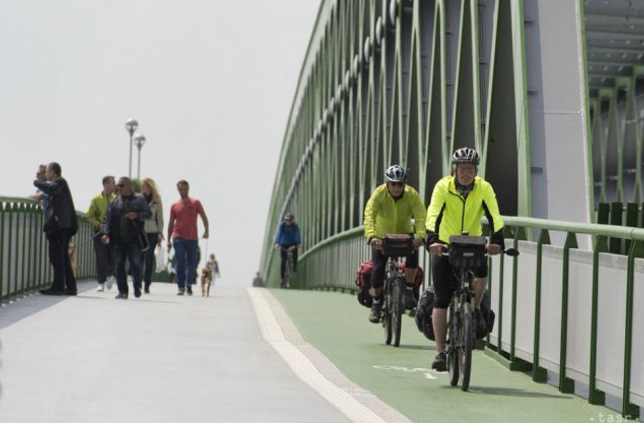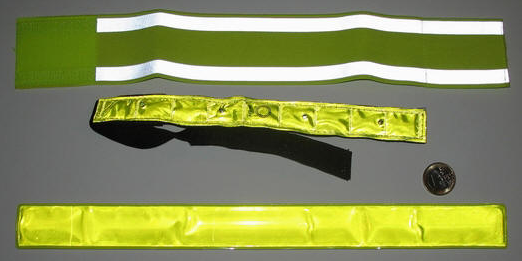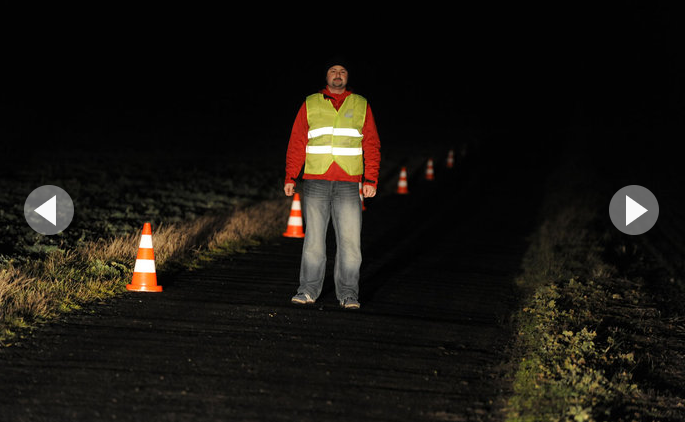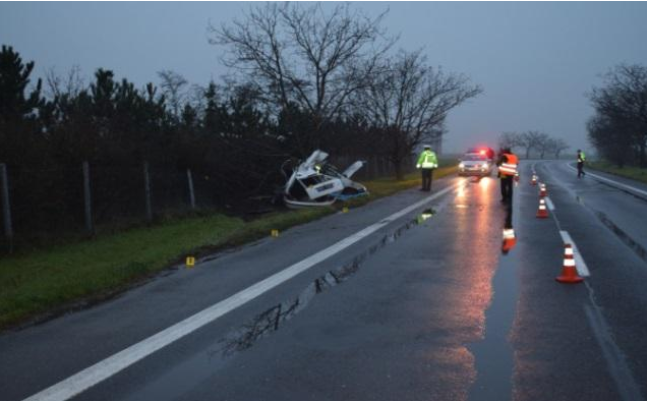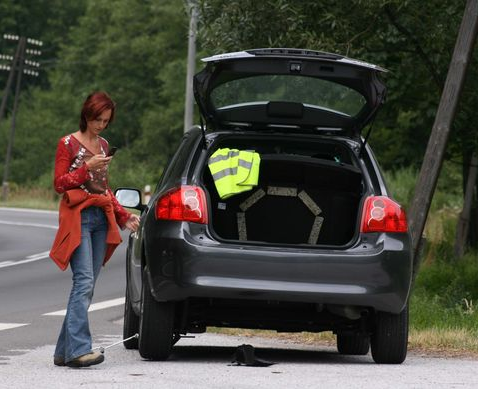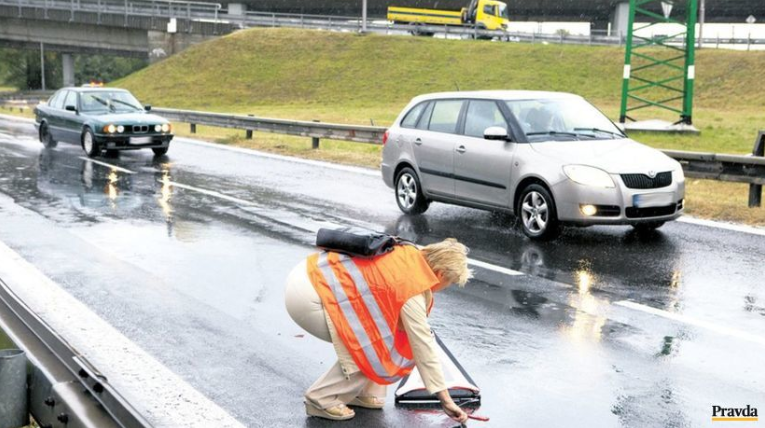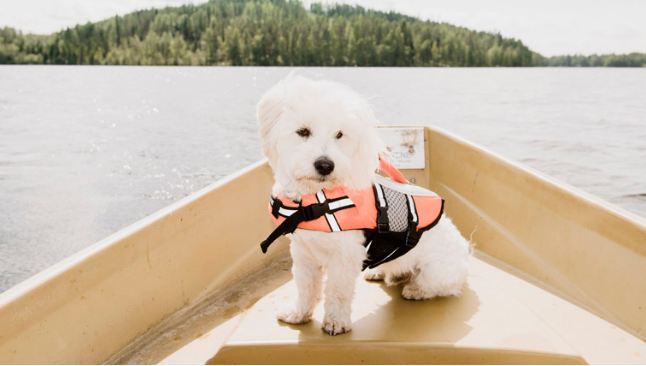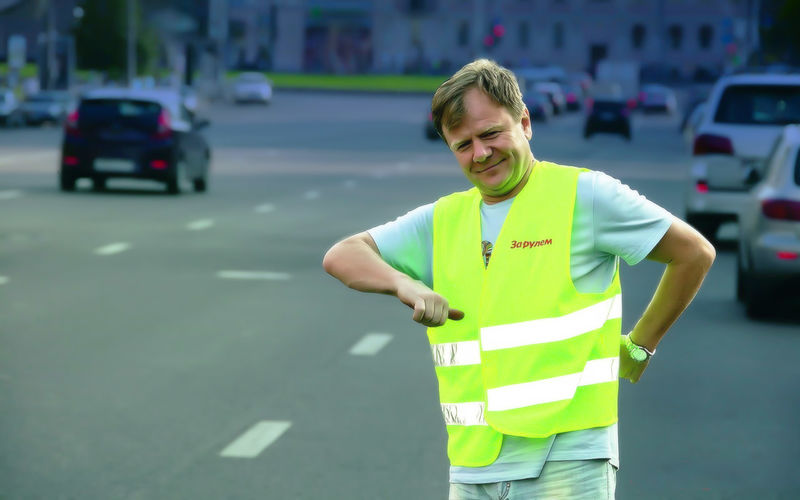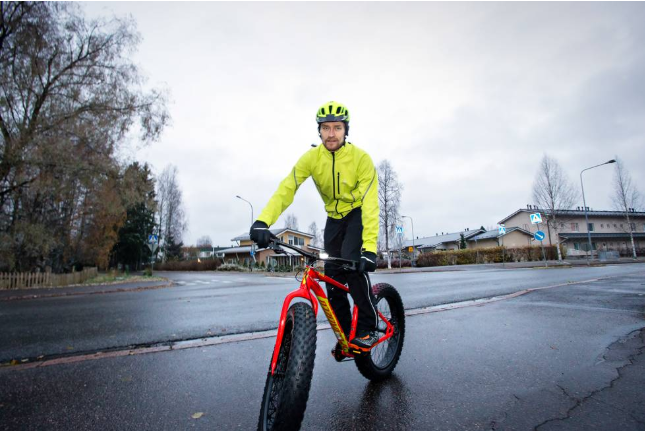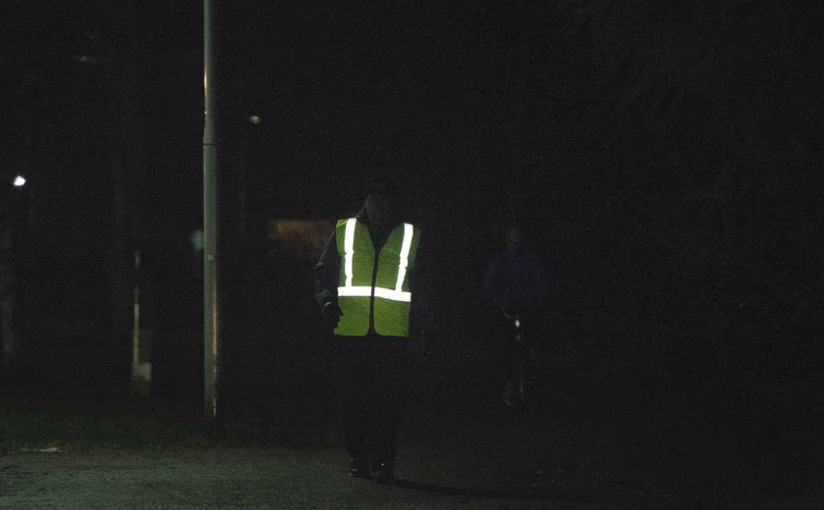On Sunday it will be a year and a half since pedestrians were to start shining on our roads. Literally, on February 20, 2016, the following formula was added to the Road Traffic Act: “If a pedestrian moves outside the village on a side or roadside in a place not illuminated by public lighting, he/she is obliged to wear retro-reflective material positioned so as to be visible to other road users.”
Light Up
It’s shortly before 9 pm when we pass the sign indicating the end of Prague. We decided to see how the Czechs comply with the law. True, all kinds of reflectors, belts, and clothing strips are grim autumn and winter. But the law applies without exception even at the end of a capricious summer. Is it already dark or not? This is what we say when approaching from Radotín towards Černošice – we meet a completely unlit runner. The legislation defines reduced visibility by not recognizing other vehicles, people, animals or objects on the road. It is not only about darkness, dusk or dawn, but also heavy rain, snow, and fog.
From a statistical point of view, the new regulation looks promising. Perhaps in the first year of validity, the number of killed pedestrians at night outside the village decreased from 37 to 31, which is almost a fifth decrease. A massive communication campaign, warning of the possible consequences of invisible night walks, certainly played its role.
The fact that the reflective components make sense is further supported by other harsh numbers: “After the law came into effect, we registered a total of 24 killed pedestrians with reduced visibility. In seventeen cases, the pedestrian was not demonstrably reflective,” says Petr Habenicht of the Police Presidium.
Rather a warning
“Yes, I know I should have a flashing tape. I wear it in winter, but it is not completely dark yet,” the runner we meet at the outskirts of Hlásná Třebáň grows in front of us. At least she wears a distinctive red T-shirt – but it wouldn’t help her before the law.
“After the introduction, we announced that we would especially explain to pedestrians the meaning of this duty. At the same time, however, we pointed out that, as the end of the year, which tends to be the riskiest to pedestrians, is approaching, police officers will also apply block fines for non-compliance,” explains Habenicht.
However, not only unmarked pedestrians but also drivers behave dangerously in the dark. “Classic halogen headlamps have a range of up to 100 meters, which should be adjusted to speed. If we do not, we often do not have enough room for an adequate response. At the last minute we are not able to react to the obstacle,” says Besip’s head Martin Farář.
We know
Another problem that annoys night roads is the poor lighting of many cars. As we head to the destination of today’s journey, we chose the village in style.
Darkness near Beroun, we see for ourselves. Although traffic is minimal, the percentage of squinting or squinting cars is significant. The risk is not only for pedestrians but also for the surrounding drivers, which can unpleasantly dazzle. Beware of them, we say to each other as we approach an intersection somewhere in the fields. Five young people with a dog walk along the verge. Reflective elements nowhere, at least have well visible white T-shirts and hold much to the edge. On the right side of the road. “I know we should have tapes. But we didn’t take them with us. But we are cautious,” one of the girls surprised us with an apologetic tone. When we leave, the crew moves off the road. By law, pedestrians are allowed to walk along the side of the road or at the edge of the road no more than two side by side. In low visibility, they even have to go behind – that is if it is not a light-marked, organized formation. However, according to Besip’s experience, rainfall is regularly caused by ignorance of the rules. Pedestrians in low traffic do not care where to cross. “They go red, run off the crossing, and even across the highway. At night we are more anonymous and more often sin on rules, which can have tragic consequences,” says Farář. A repeated problem is just walking on the wrong side of the road. “The car thus arrives at the back of the infantrymen and therefore cannot react adequately. They also commonly believe that when they see the lights, the car sees them. This is a great misunderstanding and underestimation of the situation! ”Warns the pastor.
Where are they?
When we arrive in dark Tman, it is half-past eleven and there is no one on the roads. , Berounsko has fallen asleep and we are slowly going home. We are already wondering if it was necessary to make such a halo around the elements when nobody walks on the roads. Although, the strap or reflector does not have anyway. We drove the lanes over sixty kilometers and did not hit pedestrians with reflective elements.
We are now approaching the highway when we see the bright glare of the reflective tape at the edge of the Court. It’s hard to say what a grim figure in dark clothes is doing here. To meet her a little further behind the curve, we would probably be surprised without the tape – of course, it is on the wrong side, the right side of the road.
It is surprising how little we see reflective elements on Czech roads. Statistics show that their benefits are indisputable. However, it will probably take a lot of effort before the Czechs accept them.
Reflective elements from the perspective of law
As we wrote at the turn of the year, the obligation to wear reflective elements has brought a new balance between driver and pedestrian from a legal perspective. “There has been a situation where not only the driver has to focus on driving, but the pedestrian is obliged to be seen,” describes attorney Jan Černý. Before the effect of the amendment infecting pedestrians to become visible for the police and hence the prosecutor, the primary culprit of a potential collision was the driver. “I have also experienced cases of the accusation of a chauffeur, when a pedestrian walked on the wrong side of the road, was darkly dressed and even under the influence of alcohol,” explains Černý.
Experts agree that in the investigation of traffic accidents, it focuses not only on the driver but also on the possible proportion of pedestrians. “We have a duty here and it is assessed whether the pedestrian had a reflective element. If a driver with a reflective element had seen it, the driver could be fully developed,” Jan Černý continues.
Therefore, it may happen that a pedestrian who is hit by a car without a reflector will not get any compensation. “In every individual case, we examine whether the element has been used, how it was placed, and what its reflective area was,” says Libor Beran of Allianz, pointing out that if the pedestrians are to blame, it may even be he who pays.
About reflective elements with Martin Farář from Besip
It is a year and a half of our duty to wear reflective elements. How do you perceive the introduction?
When we look at the year-on-year statistics for 2015 and 2016 outside the municipality where the obligation applies, we have seen twenty fewer deaths in reduced visibility. Moreover, after a long time, legislation and a large campaign came together, which was subsequently supported by police action to check that pedestrians wear the belts.
What about this year’s first half?
The trend continues, although in the first half of the year there were no major declines. However, we expect the main season of reflective elements and the most dangerous situations only at the end of the calendar year.
There was also talk of introducing the obligation to wear reflective elements even in unlit parts of municipalities.
From the beginning, we have been for nationwide introduction in places where there is no public lighting. This would be true, for example, in the peripheral parts of municipalities where there is often no pavement. Reflective items should be worn to increase the chances of a pedestrian seeing.
The introduction was accompanied by an extensive campaign. To be continued?
Definitely. We will also continue to cooperate with the traffic police, which will again make available a large number of reflective items. The goal is to reach as many people as possible. We do not want this to be based strictly on enforcement, but for the state to bring something – elements will be distributed and we will repeat why it is important to use them. It should not be based on repression.
On the legs and wrists
If you are on the road in poor visibility, we recommend using two straps: ideally one forearm and the other over the ankle. “We always put them on the right side, because outside the villages where there is no sidewalk, we walk in the opposite direction, ie the right side of the road,” recommends Martin Farář, head of Besip. “The lights of an incoming car shine first in the lower half of the body, so it is good to have the tape as low as possible. It is important to avoid having our clothes covered, especially when we put it on the wrist,” he adds. Although the law requires use exclusively outside the municipality, we recommend this element whenever you are in unlit areas.
How to choose a reflector
Hundreds of reflective elements are available on the market – the differences in visibility are abysmal. Which one to choose? “The guideline for choosing a quality material can be a CE quality certificate or a brand of a respected manufacturer. When it comes to clothing, such as a reflective vest, there should also be information about how to wash and how many wash cycles the material will last without changing its properties,” advises Zuzana Orlichová. It is also advisable to test the product before purchasing. On the market, there are products with a lower reflectance than may seem at first glance and not every tape is well visible after lighting. “We can measure the reflectance by using a camera with a flash, for example on a mobile,” says Lukáš Pejpal.
